Getting your pricing strategy right is one of the most important parts of selling online, where prices are changing constantly and really dynamic. In order to not being behind the competition and having a healthier bottom line, you have to adapt your online business to that price competition depending on different scenarios. But, doing it in a smart way will be a definite game-changer. To achieve that you’ll need a solid ecommerce strategy and also a proper competitive intelligence tool which will help you generate smart prices. And you can even take it to another level with repricing Magento.
In this article, we’ll show you various and common ecommerce pricing strategies and scenarios that you can face in the industry. Related to these scenarios, you will see some repricing rules which you can generate from competitor intelligence software.
Before diving into ecommerce repricing strategies and scenarios, I would like to make two quick reminders. Firstly, repricing does not always mean running for the bottom and being always the cheapest in the market! Of course being competitive, in terms of price, will help you to lift up your sales but the philosophy under the repricing is encouraging sellers to increase their prices when the circumstances are right and find the best opportunity. So, while applying repricing rules, you have to have an opportunist and data-driven mindset.
Second, you have to know all your costs. As, when you set up the repricing rules, you’ll be required to enter a minimum price for your listings. Even if you’re repricing manually, this is a must. Consider all your costs and note the minimum price that you’re prepared to sell your product at so you’re making a profit. If you leave your costs alone and just focus on price, your business is doomed to die!
Scenario 1: Being the most competitive one in the market and still holding the profitability.
This scenario is for ecommerce retailers who aim to be most competitive in the market but also don’t ignore their costs and hold their profit margin at a desirable level.
The applicable repricing rule for this strategy.
PS: We’ve set the numbers randomly in order to be more clear for all types of rules at below. Of course, you can set the numbers depending on your goal and strategy;
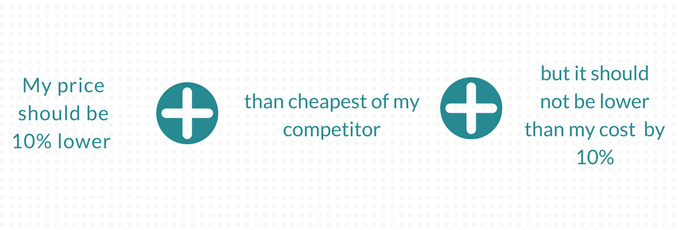
This strategy is best;
- If you aim to sell as many products as possible.
- When you diminish the excess inventory products.
- If you want to be at the top of price comparison engines.
Drawbacks of this strategy:
- It is easily applicable. One of your competitors can easily set the price below of yours’.
- You won’t get fattened revenues.
Scenario 2: Competing with the Key Competitor
This is a scenario where you have a key competitor selling the same or similar goods in the market and you are always in price competition with that specific rival. Also, this scenario fits well where the target consumer group is price-sensitive.
At below, two different repricing rules to compete automatically with your key competitors.
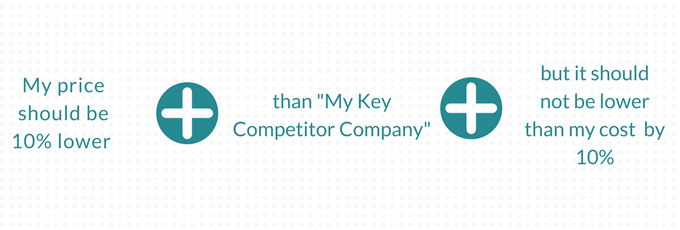
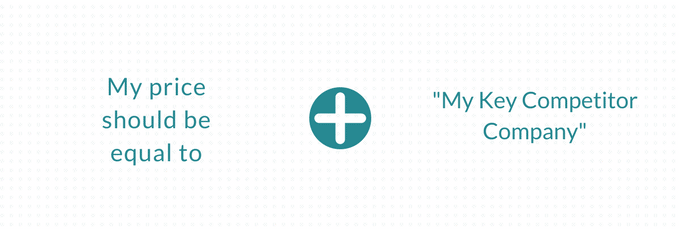
This strategy is best;
- When you have a specific competitor that sells similar or the same products in a certain vertical.
- If you have a specific competitor that dominates the market.
- When you have a specific competitor that steals from your visitors/customers.
- If the competitor has a promotion on their products (either a discount or gift). Then you have a chance to respond to the promotional activities of your specific competitor through repricing.
Drawbacks of this strategy:
- It is easily applicable. The key competitor can easily set the price below of yours’.
- You increase the chance of missing the general competition.
- Your profit margins may decrease if you find yourself in a fierce price war with that specific competitor.
Scenario 3: Premium Pricing Scenario
If you are running a premium brand or selling luxury products, you have to be really careful about your prices and analyze the perception of your target group. The reason for purchasing premium products is not only about functional benefits but also satisfying emotions. So, in that scenario, you should keep your brand value at the desired level and keep customers loyal to your products. Being cheaper or competitive in the luxury industry may not help to increase your sales. On the contrary, it will harm your brand value.
So, as a high-end brand, it would be better to set prices higher and make feel the core audience valuable and loyal. Customers have a tendency to view their products as more prestigious and, as a result, more desirable. The assumption is that a high price indicates that the product quality is high as well.
In order to eliminate the risk of harming brand value, we show you multiple ecommerce repricing strategies below.

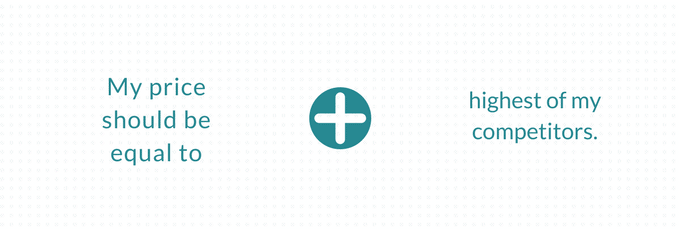
This strategy is best;
- When you are running a premium brand or selling luxury products.
- If your customers are not price-sensitive and loyal to your brand or products.
- If you aim to acquire big revenues.
Drawbacks of this strategy:
- As your prices are really high, you won’t cover every type of customer
- If you are new in the market, there may be a problem of making initial sales.
Scenario 4: Cost Oriented
Cost-based pricing is simply adding a certain percentage or amount of markup to your products’ internal costs to find your prices. This is the simplest method among different pricing strategies to find which level a product. It is preferred by ecommerce companies that have a goal of keeping their financial health at an optimum level.
Generally, ecommerce companies or suppliers who manufacture their own products should adopt cost-oriented pricing and reprice its online prices depending on the changes of the costs.
For the repricing rules, the costs should be the first variant that should be taken into account. So, here are some repricing rules set by ecommerce retailers to enhance their cost-based pricing strategies.
In the first rule, there is a slight concern of competition but the price competition is ignored at the second rule.
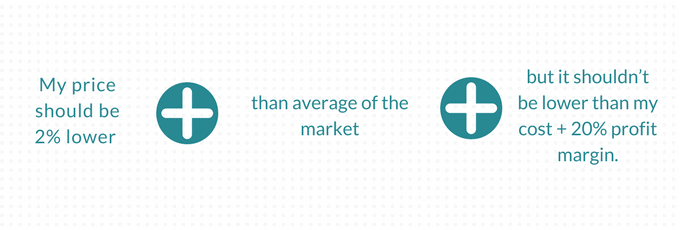
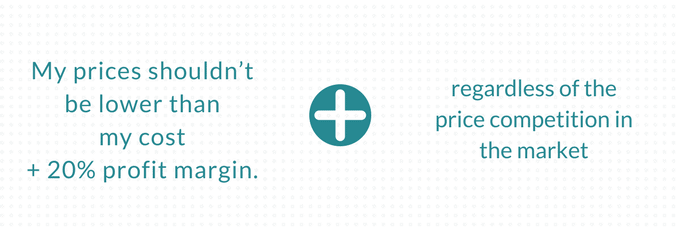
This strategy is best;
- A straightforward and applicable pricing strategy.
- If the company manufactures its own products.
- If the costs are so flexible and vary from time to time.
- Ensures a steady and consistent rate of profit generation.
Drawbacks of this strategy:
- May lead to underpriced products.
- Competition is ignored. In a competitive market, cost-based pricing may have difficulties in competing with competitors with a lower price.
- Steady prices – ignoring the competition and consumer analysis willingness to pay – will lead to a decrease in conversion rates.
Scenario 5: Category-Based Competitive Pricing
This is a common scenario where a general retailer competes with a competitor in a specific category. To be more clear,
Let’s say there are two different retailers competing in the same category;
1- The first retailer named “General Ecommerce Retailer” sells all types of products from almost every category. ( active in computers and laptops, Books, Gaming, Home and kitchen, Toys, Fashion, Sports, Camping, the list goes on…)
2- The second retailer named “Camping Vibes Ecommerce Retailer” specializes in vertical camping goods and just sells camping products. The company has average prices.
Then, imagine that these retailers are competing harshly in the camping market in terms of price. To take advantage of repricing technology and find the most optimal price, the rule for General Ecommerce Retailer below can be set;
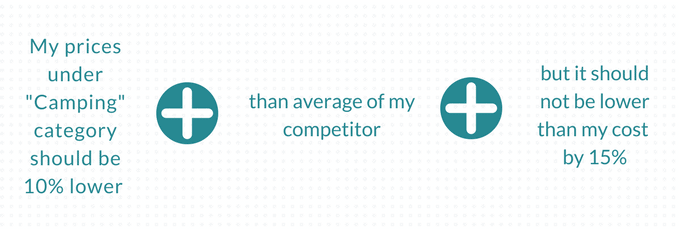
Scenario 6: Brand Based Competitive Pricing
Another common and last (for now) scenario that can be seen in price competition is happening between suppliers and general ecommerce retailers. Suppliers or brands should have a solid pricing strategy towards resellers to keep up their brand value and have margins at a healthy level. As we did on Category Based Competitive Pricing, here a generic example.
This time we have one brand and other online marketplaces in the scenario.
1- The supplier named “Great Shoe Brand” manufactures its own sports shoes and has great penetration in the online market. “Great Shoe Brand” sports shoes can be found in both its own online store and other online marketplaces.
2- Other online marketplaces are so enthusiastic about selling “Great Shoe Brand” sports shoes and imagine there is a huge competition for that specific brand.
In that scenario, Great Shoe Brand should generate some repricing strategies according to its policy to lift up its sales. There may be two different approaches for that case. Great Shoe Brand can show its own identity as premium and increase its own value by setting higher prices for sports shoes or the brand can increase its own online store sales and awareness among shopping areas by setting competitive prices.
Here are two different ecommerce repricing strategies for Great Shoe Brand;

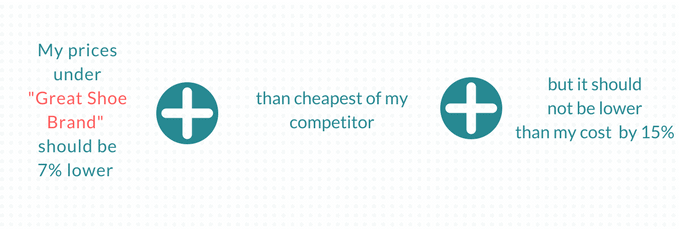
Conclusion
To sum up, with these different repricing scenarios, you are able to compete better with your competitors. The smartest way to use repricing is through competitor pricing intelligence software like Prisync. By getting rid of manual calculation, the responding speed towards your competitors’ pricing move will amazingly increase. With Prisync’s Dynamic Pricing Module, you can apply every single of these repricing rules and find your SmartPrices for your products.
pricing strategies

